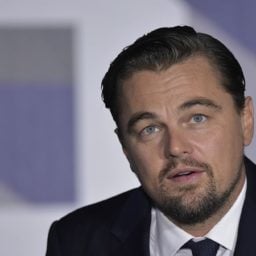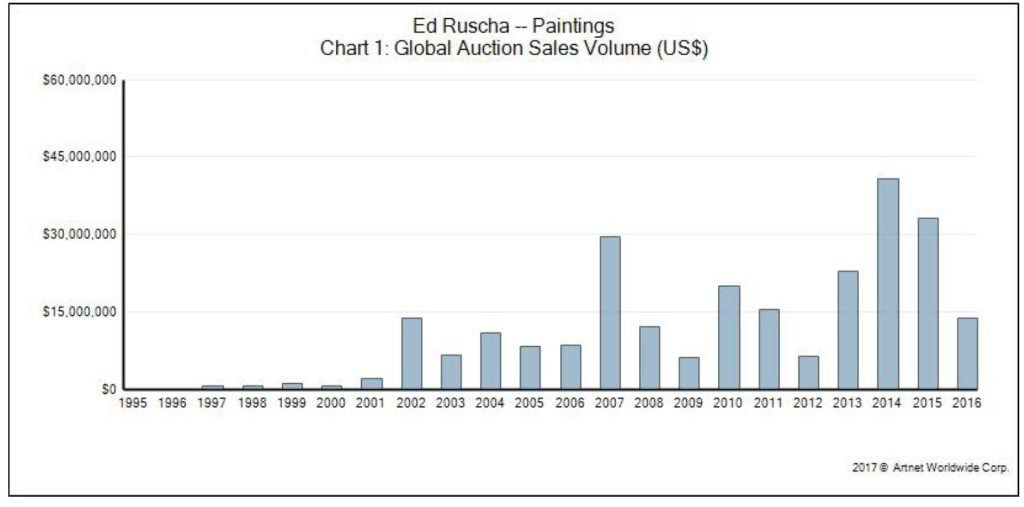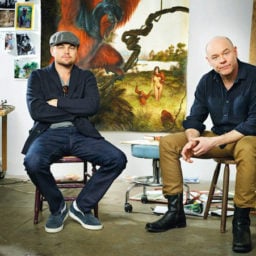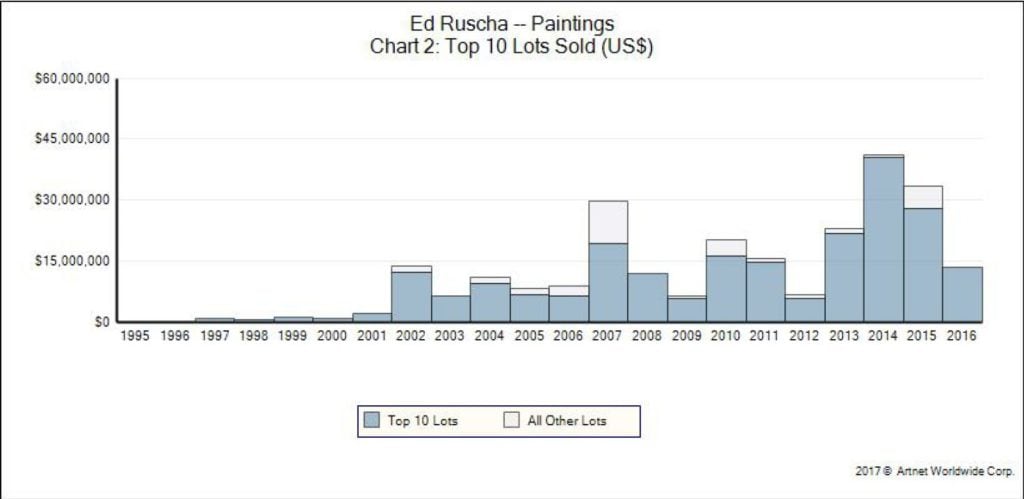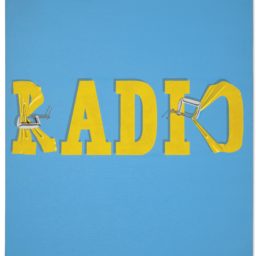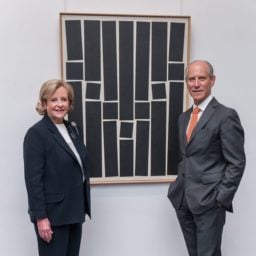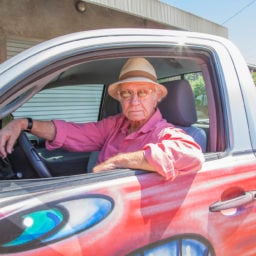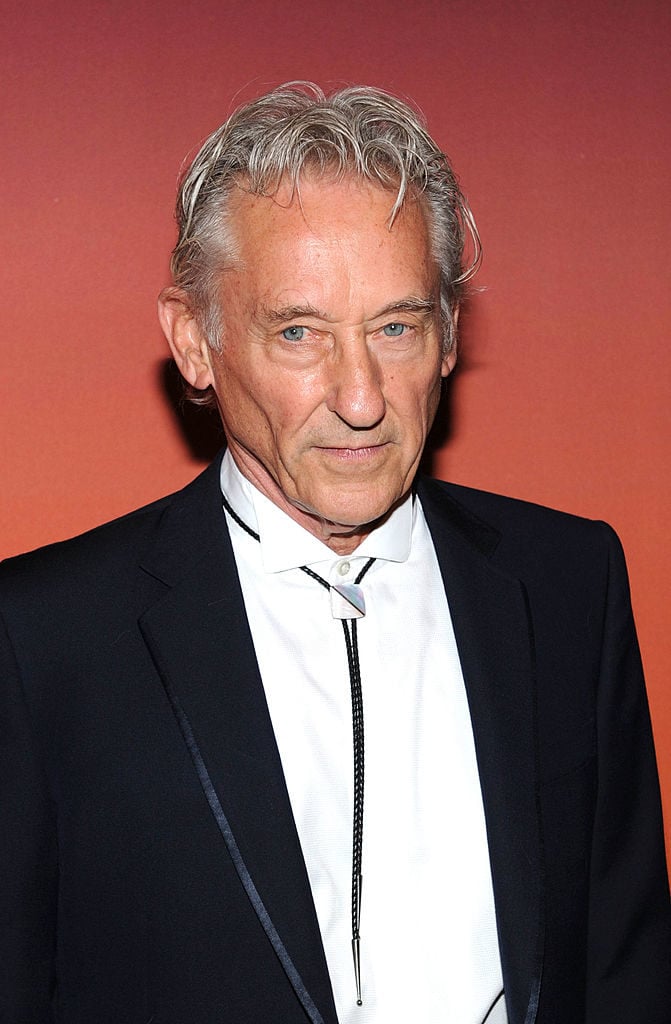

Leonardo DiCaprio made headlines this week after he dropped $125,000 on a yet-to-be commissioned work by contemporary artist Ed Ruscha at Sean Penn’s wildly successful $37 million charity auction on November 7th.
The Hollywood actor, who reportedly owns major works by Ruscha as well as by Jean-Michel Basquiat, Walton Ford, and Takashi Murakami, is likely aware that six-figures is not exactly an average price for a work by Ruscha. That range, experts said, is typically the price of a unique work on paper, for which demand is robust. The Los Angeles-based artist frequently donates such works on paper to charity auctions.
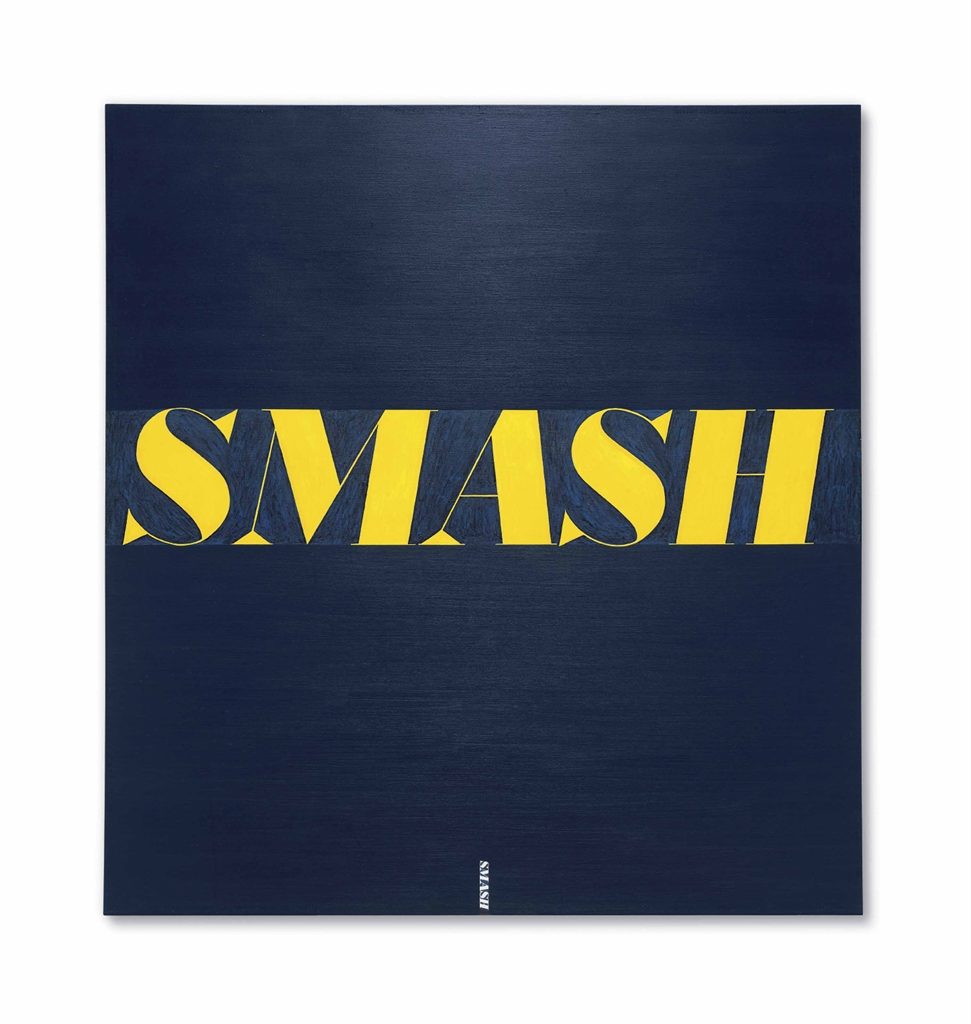
Ed Ruscha, Smash (1963). Courtesy of Christie’s Images Ltd.
The high end of the market for works by Ruscha has soared in recent years. The current record is a hefty $30.4 million, set in November 2014 for the large-scale word painting Smash (1963), sold at Christie’s New York. The artnet Price Database lists more than 3,300 auction results, and to date, 69 works have sold for more than $1 million each at auction.
The second-highest price happened at Christie’s New York in 2007, when a bidder paid nearly $7 million for Burning Gas Station (1965-66).
As the contemporary market was hitting a high that same year, the market for Ruscha “grew steadily and mostly mirrored the overall growth of the market,” Scott Nussbaum, head of department, New York, 20th century and contemporary art at Phillips auction house, said in an email to artnet News.
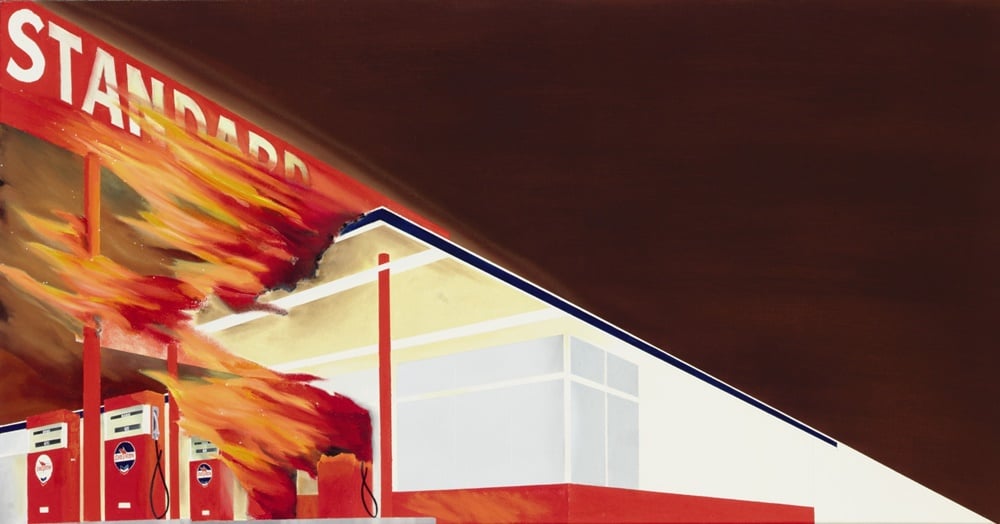
Ed Ruscha, Burning Gas Station (1965-66). Courtesy Christie’s Images Ltd.
However, Nussbaum notes, “several catalysts propelled it to the next level, such as the Hayward Gallery retrospective, which traveled to Munich and Stockholm in 2009–2010. He described the show as “an eye-opener to the post-recession market,” and continued, “The market has a tendency to favor ‘expensive’ artists, so after that moment demand and prices went up. It’s worth noting that in the 25 years prior to Smash, only five post-1960’s works by Ruscha had ever sold for more than $3 million. In the past two years, six have done so.”
The most in-demand works, Nussbaum said, are “classic word paintings from the early-mid ’60s along with the handful of trademark and gas station paintings.” He continued, “Collectively, they form one of the most iconic and coherent bodies of work in the 20th century and their scarcity make them exceedingly difficult to obtain. Mountain Paintings have also become highly desired; they are usually big, beautiful, witty, aspirational and are unmistakably Ruscha.”
One such mountain painting, Sex At Noon Taxes (2002), sold for $4.3 million at Phillips in 2010, marking the 6th highest price at auction for the artist.
Nussbaum explained that auctioning off a notable work of art allows for the possibility that collectors with exceptional means will compete for a single work. “So we see prices at auction that could never have been achieved privately,” he said. But there are reasons that private sales have been climbing in the past few years. “For instance, if a client lives off of Mulholland Drive in L A they may be willing to pay up for one of Ed’s painting depicting that street. That’s one reason we’re increasing our focus on private sales to complement our auctions.”

